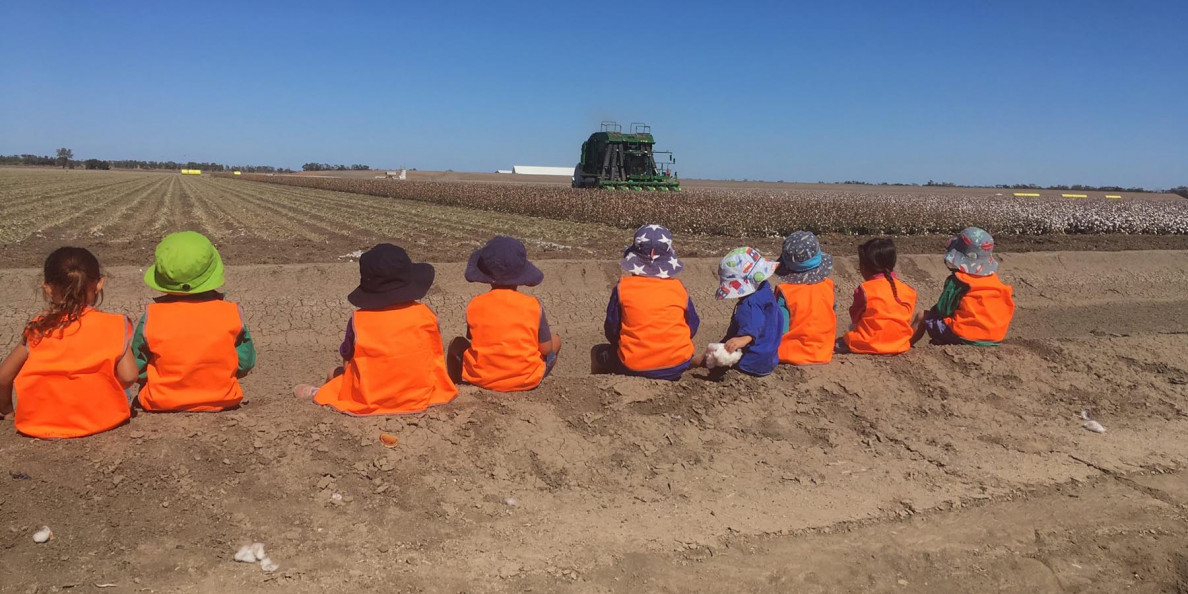EIMEAR MCDONAGH, AUSTRALIAN COTTON SHIPPERS ASSOCIATION
As we manage through the pandemic, there has been a lot of rhetoric about how we manage resources both human and natural.
We saw this impact early on the textile sector as high street retailers systematically walked away from garment contracts that threatened to cripple producing countries such as Bangladesh that derive over 80 per cent of their GDP from the ready made garment sector.
Over the past 10 years, the natural fibre market has seen a marked improvement in the demand for sustainably produced fibres. This is becoming more critical as legislation forces companies to report on the source of their raw materials and the conditions under which their product is produced.
Commercial business decisions are being heavily influenced by consumer sentiment conveyed through social media. It would be nice to think retailers make decisions in order to do the right and ethical thing, but businesses are changing their behaviour because negative behaviour can be easily identified and Tweeted, Insta'ed, WhatsApped.
In an April 2020 report issued by The Apparel Coalition, it outlined sustainable fashion prior to the pandemic and the long-term view post the pandemic. They concluded 'transparency will be highly relevant for all stakeholders. Sustainability will be enabled by technology and can be leveraged to drive innovation across design, supply chain management, and new business models.'
We have seen unprecedented disruption to the textile supply chain, but with disruption comes opportunity. At least one garment producer is testing an app that tracks the sustainability credentials of the fibre and the supply chain for the garments they produce. They provide this data to the consumer via a scannable item on their garments.
In Australia, we have adopted the Better Cotton Initiative, a mass balance system which tracks the trade of cotton produced under the BCI determined practices and allows it to be used with conventional cottons, so long as they are used in equal proportions. This platform was the first of its kind and reaches over 10,000 supply chain participants, whilst supporting sustainable farming practices in developing countries.
Australian cotton has one of the most enviable reputations for its practice of continuous improvement in all areas; be it from seed breeding technology, integrated pest management on farm, to sustainable farm practices that employ the latest technology which is primarily developed in Australia.
Sustainability and the measures we use in Australia - arguably to one of the highest standards in global cotton growing - is not enough on its own. For sustainability credentials to be valued they need to be identified, captured and made transparent.
As we mature in the traceability space, we are using various methods to trace cotton back to the farm level. There are traceability technologies currently being used in Australia, Oritain and Fibre Trace which provide different methods for retailers to trace and verify the raw cotton that makes up the yarn and fabric they are sourcing. BCI is itself launching a project to explore a traceability system and the planning phase is underway.
There are no statistics to show the percentage of garments produced through vertical integration versus those produced when there may be five to six different ownership points throughout the supply chain - spinning mill, dying house, yarn trader, knitter/weaver, garment producer and retailer. As merchants we can't choose to only partner with vertically integrated garment producers to shorten the chain and therefore attain an ease of transparency from farm to garment. The current system is what we must deal with. Domestically, Cotton Australia's 'Cotton to Market' strategy has had success in working with numerous Australian retailers to connect the supply chain with the help of ACSA members and promote Australian cotton in their products.
Without doubt, the retail sector is paying more attention to transparency and to really understanding their supply chain. This fact became quite evident for us trading Australian cotton last year when BCI banned the certification of cotton grown in Xinjiang Province, Western China. We are now seeing a renewed demand for BCI credits for Australian cotton as the supply chain pivots to a more secure and reliable source of sustainably produced cotton.
In Australia, our MyBMP program covers 10 key areas farm operations and includes online self-assessment mechanisms and practical tools and auditing processes to ensure that Australian cotton is produced according to best practice. MyBMP underpins our BCI registration and is an excellent opportunity to promote our social license to operate; the reach can expand beyond proving to ourselves and our legislature that we are a responsible agricultural industry.
It is my view the signal for the future is to focus on the sustainability but also on traceability of our fibre; both must be integrated throughout the industry to be able to scale up and be robust in its integrity. If we are to take advantage of the disruption, take the opportunity to further add to the quality and reputation of Australian cotton, we should really focus on and value our MyBMP program. A larger uptake of MyBMP, coupled with an industry focus on data capture and traceability will certainly add value to the globally renowned brand that is Australian Cotton.
